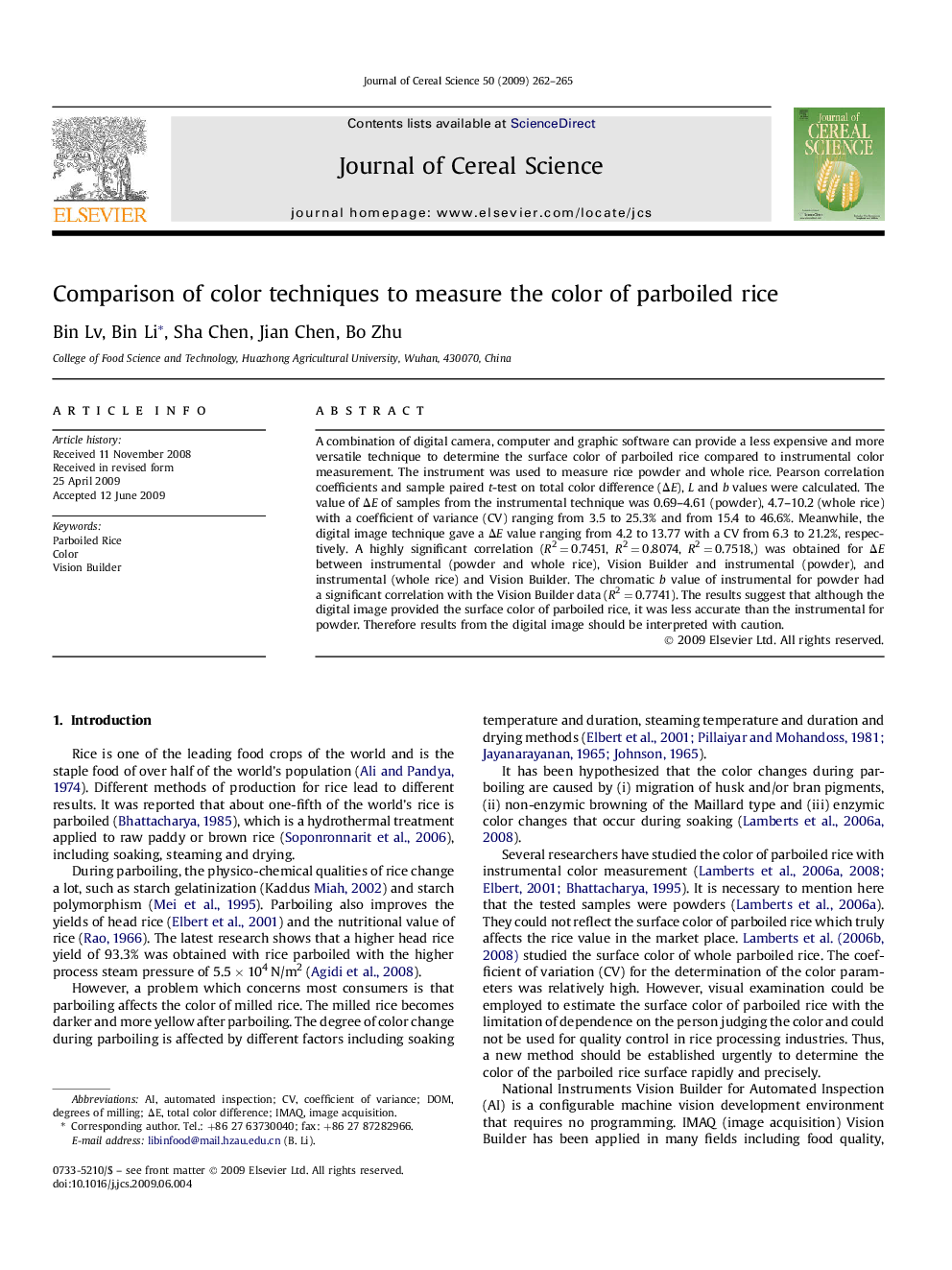| Article ID | Journal | Published Year | Pages | File Type |
|---|---|---|---|---|
| 4516493 | Journal of Cereal Science | 2009 | 4 Pages |
A combination of digital camera, computer and graphic software can provide a less expensive and more versatile technique to determine the surface color of parboiled rice compared to instrumental color measurement. The instrument was used to measure rice powder and whole rice. Pearson correlation coefficients and sample paired t-test on total color difference (ΔE), L and b values were calculated. The value of ΔE of samples from the instrumental technique was 0.69–4.61 (powder), 4.7–10.2 (whole rice) with a coefficient of variance (CV) ranging from 3.5 to 25.3% and from 15.4 to 46.6%. Meanwhile, the digital image technique gave a ΔE value ranging from 4.2 to 13.77 with a CV from 6.3 to 21.2%, respectively. A highly significant correlation (R2 = 0.7451, R2 = 0.8074, R2 = 0.7518,) was obtained for ΔE between instrumental (powder and whole rice), Vision Builder and instrumental (powder), and instrumental (whole rice) and Vision Builder. The chromatic b value of instrumental for powder had a significant correlation with the Vision Builder data (R2 = 0.7741). The results suggest that although the digital image provided the surface color of parboiled rice, it was less accurate than the instrumental for powder. Therefore results from the digital image should be interpreted with caution.
